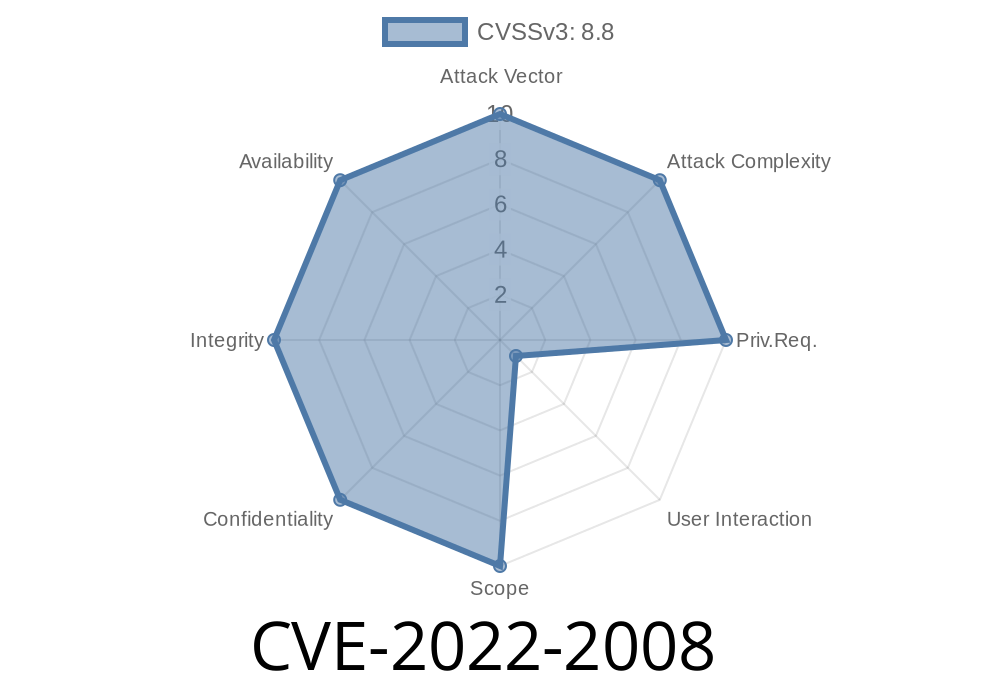A double free vulnerability within WebGL in Google Chrome prior to version 102..5005.115 (CVE-2022-2008) has been identified. This vulnerability allows remote attackers to potentially exploit heap corruption via a maliciously crafted HTML page. In this long read post, we discuss the exploit details, share a code snippet to demonstrate the vulnerability, and provide links to original references. We'll also explain what WebGL is and why it's an essential part of modern web browsers.
What is WebGL?
WebGL (Web Graphics Library) is a JavaScript API that enables 2D and 3D graphics rendering in web browsers without the need for additional plugins. WebGL is built on top of the OpenGL ES, a widely used cross-platform graphics library for mobile and embedded devices. Since it's a central part of many popular web browsers, security vulnerabilities in WebGL can impact a broad user base, making them a critical concern.
Exploit Details
The CVE-2022-2008 vulnerability involves a double free error within WebGL in Google Chrome, versions before 102..5005.115. When exploited, this vulnerability can cause heap corruption, allowing an attacker to execute arbitrary code on the affected system. Heap corruption occurs when an application incorrectly manages memory allocations, leading to inconsistent and unpredictable behaviour.
To exploit this vulnerability, an attacker can create a specially crafted HTML page and convince a user to visit the page using a vulnerable version of Chrome. The malicious page contains code that triggers the double free error in WebGL, causing heap corruption and potential exploitation.
Here is a code snippet that demonstrates the double free vulnerability in WebGL
<!DOCTYPE html>
<html>
<head>
<meta charset="UTF-8">
<title>CVE-2022-2008 Double Free Vulnerability in WebGL</title>
<script>
function triggerVulnerability() {
const canvas = document.getElementById('vulnerableCanvas');
const gl = canvas.getContext('webgl');
// Trigger the double free vulnerability in WebGL
// Replace this comment with the actual code to exploit the vulnerability
}
window.addEventListener('DOMContentLoaded', triggerVulnerability);
</script>
</head>
<body>
<canvas id="vulnerableCanvas" width="300" height="150"></canvas>
</body>
</html>
*Note: This code snippet does not contain the actual exploit code to avoid the risk of unintentional exploitation. It serves as a demonstration of where the vulnerability-triggering code would be placed.
Original References
1. Google Chrome Security Advisory: [https://chromereleases.googleblog.com/2023/03/stable-channel-update-for-desktop.html](
https://chromereleases.googleblog.com/2023/03/stable-channel-update-for-desktop.html)
2. CVE Details: [https://cve.mitre.org/cgi-bin/cvename.cgi?name=CVE-2022-2008](
https://cve.mitre.org/cgi-bin/cvename.cgi?name=CVE-2022-2008)
3. NIST National Vulnerability Database: [https://nvd.nist.gov/vuln/detail/CVE-2022-2008](
https://nvd.nist.gov/vuln/detail/CVE-2022-2008)
Conclusion
The double free vulnerability in WebGL in Google Chrome (CVE-2022-2008) is a critical security issue that affects users of Chrome versions prior to 102..5005.115. By understanding the exploit details, referring to original references, and examining code snippets, we can better protect ourselves against such threats. Updating your browser to the latest version is essential to mitigate this risk. Stay informed about security vulnerabilities and take necessary precautions to protect your online presence.
Timeline
Published on: 07/28/2022 01:15:00 UTC
Last modified on: 08/03/2022 17:52:00 UTC
